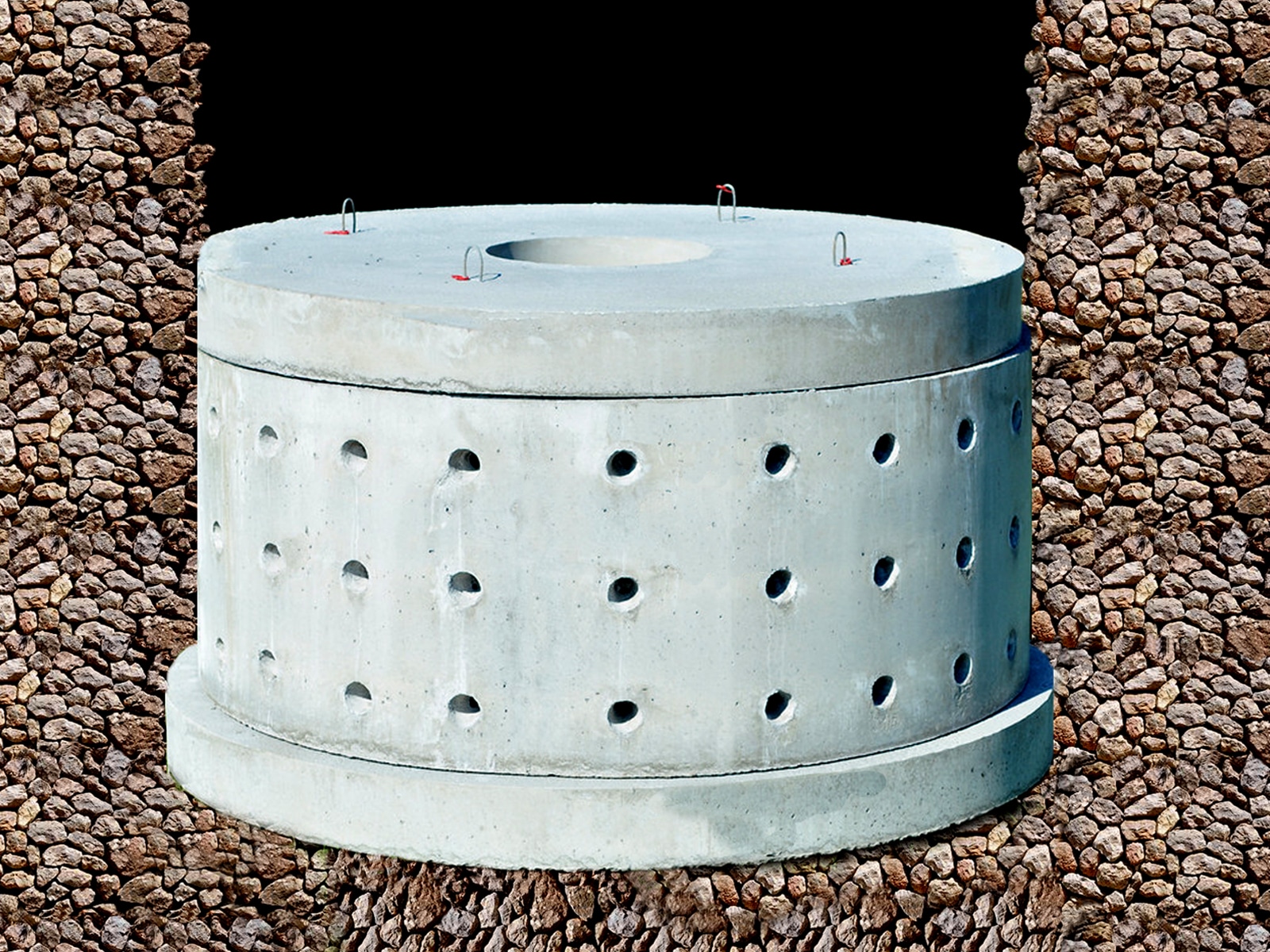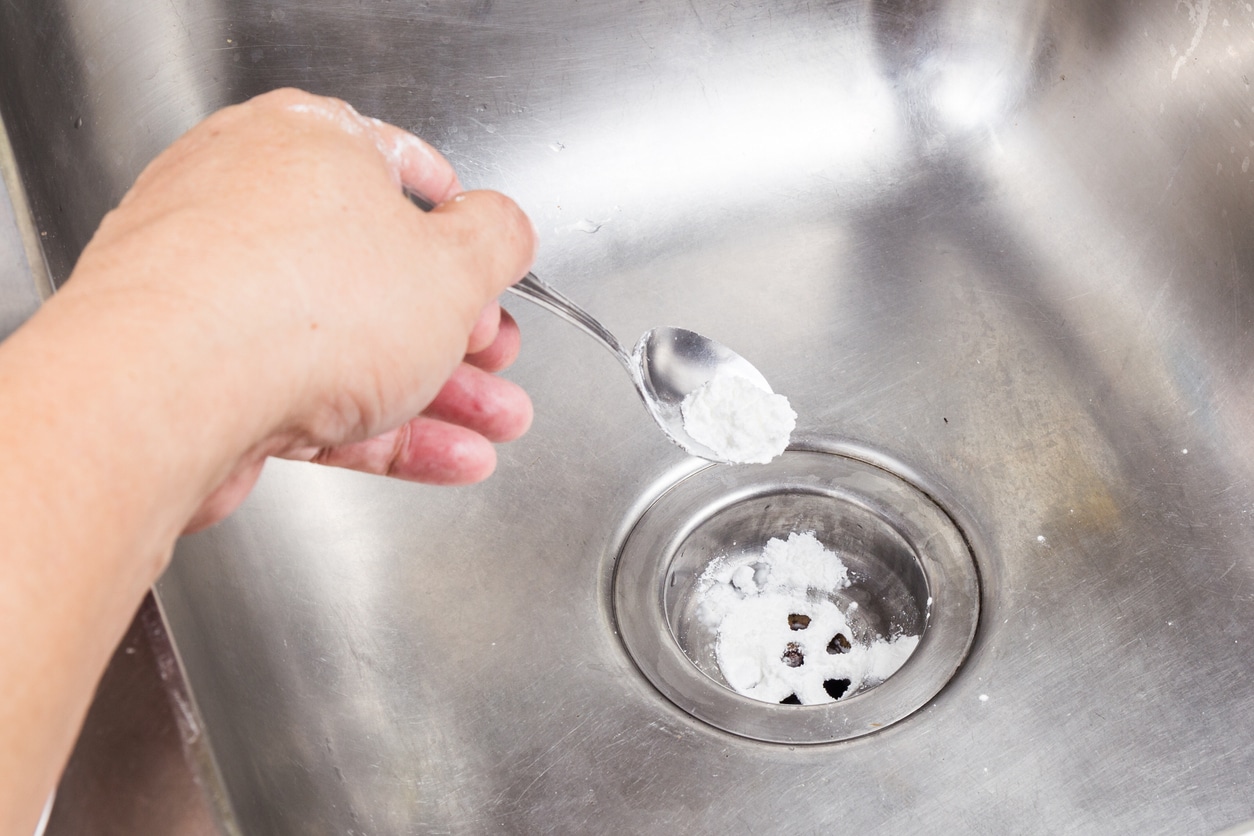Dry wells (also known as soakaway pits, soakwell, or soak pit), is one of the earliest models of a water runoff management system. The shape and design is similar to those of a water well, but dry wells are filled with gravel, or surrounded by gravel, and usually covered from sight. Unlike water wells that basically function as a water reservoir or holding tank, dry wells contain rainwater or wastewater, and allows this water to percolate into the soil. Dry wells are primarily used as a means to control the excess of runoff water from the roof, finished surfaces, and basements as well. A properly designed dry well is connected to a series of pipes which collect and disperse water away from a particular area.
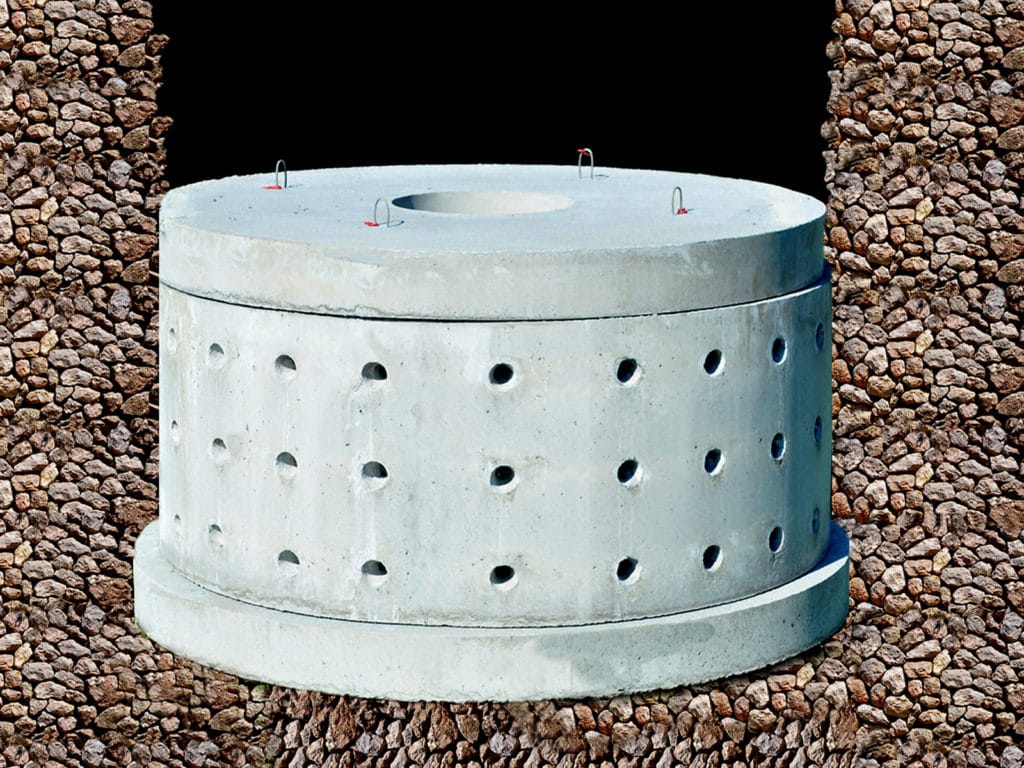
A dry well tank, or basin, is located underground, but above the area’s water table. Dry wells installed in an areas water table (groundwater) will not function properly. In cases where there is a high water table, a leaching field may have to be used in place of dry wells. A dry well needs to be above water table so that the basin will contain air, and be empty of fluids. This design allows the dry well to absorb incoming water quickly until all the air is displaced. After it is full, a dry well can only absorb water as fast as it can dissipate the water inside of it to the surrounding gravel and sub soil.
Two important points of constructing good dry wells
- To prevent frequent overflow a dry well has to be carefully designed by a professional Architect or Engineer. Soil testing should be performed in order to ensue proper “percolation”, or water absorption. Some dry wells may require a large capacity to contain a large volume of water, and dissipate it slowly over time due to poor soil absorption. The idea behind this careful design is to make it compatible with both intermittent, or heavy rainfall.
- Good connections between pipes, both in-flowing and out-flowing, to prevent pipe collapse and pipe clogging. A pit filled with stone, gravel, rubble is better able to withstand collapse. More modern dry wells are made of reinforced concrete but with perforated bottom and sides, which do not require being filled with aggregate stone or gravel.
Installation tips for dry wells
Another good thing about dry wells is that they do not take up any land area because the basin is buried underground. It should be neither too far nor too close to the main structure for optimum results. Ideal placement is about 50 feet form a structure, but a minimum of 15′ is typically required by code. The distance is adjustable depending on intervening soil conditions. Some of the parameters to be considered when installing a dry well include the existence of other underground utilities, distance to a driveway, and topography. Obviously installing a dry well on low lying ground makes more sense than installing one on high ground, as water run downhill.
Likewise installing a dry well away from other underground utilities prevents possible utility damage. On the other hand, a long distance increases the likelihood of the connecting pipes failing at a later date. It is always best to good superior materials, such as extra heavy cast iron pipe. Dry well installation is not a job you want to redo at a later date.
The design of a dry well is very similar to that of a cesspool, sometimes referred to as a septic system. The biggest difference is that a cesspool is used only as treatment for wastewater, while dry wells typically handle storm water. It is difficult to tell when a dry well was first used, but the similarities in design with cesspools suggest that both appeared at about the same time predating the septic tank system.
Similar systems to a dry well
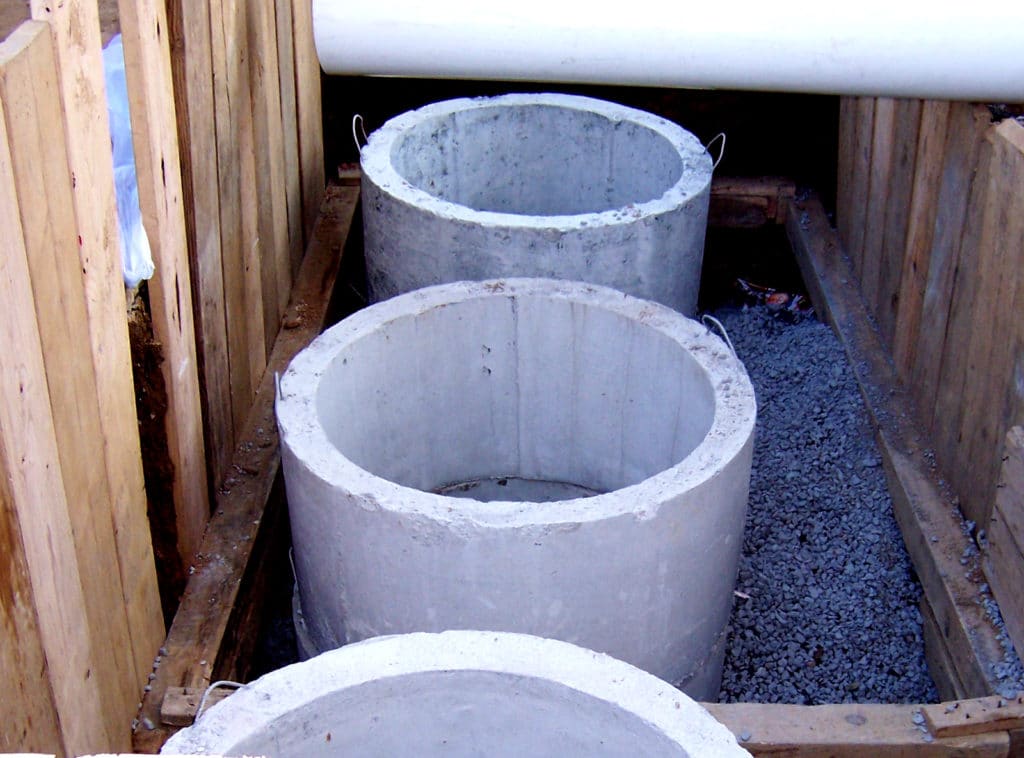
A dry well and septic tank use the same basic principles; both store wastewater and clean it (sediment sinks to the bottom of the tank) before the water is reintroduced into the environment. Septic tanks are a much more modern version, made up of a watertight chamber. All wastewater from a household enters the chamber for settlement and filtering. A single septic tank system has three major parts: settlement, separation between solid waste and water, and storage of the solid. On the other hand, dry well simply absorbs wastewater and lets it percolate into the soil. There are no multiple filtering steps with dry wells, but they takes advantage of soil and other natural materials to do the filtering. A septic tank is a better-designed wastewater treatment system for a household because the effluent is considerably cleaner when introduced back into the environment.
A detention tank also resembles the design of a dry well. Instead collecting wastewater, a detention tank is mostly used for prevention of storm water overburdening the public sewer system. It has a sealed tank or tanks. These tanks store large amounts of storm water before the tank releases the water slowly into the public storm water treatment system. During heavy rainfall events, a detention tank reduces the chance of public sewage over-capacity by restricting the flow from out of the tanks.
Purposes of Dry Wells
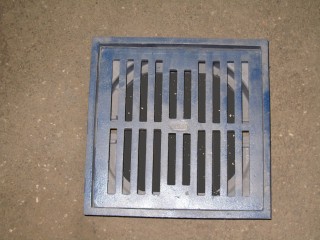
In the event of a rainstorm, the roof of an average-size house can receive more than 1,000 gallons of water. Without proper gutter and leader design that leads to dry well, the water directly hits the ground and penetrates into the soil. Assuming there are openings or cracks in the foundation, there is serious risk of eroding the structure. A more common dilemma is pooling water that results in insect infestation, or other unhealthy conditions.Rain water from the gutter, or surface areas, can be directed into the dry well through a series of pipes or area drains. This minimizes the risk of a flood in the basement, or pooling water.
A dry well captures the water even before it hits the soil surrounding the foundation, or has a chance to saturate your yard area. Once the water is inside the basin, a dry well directs the water away from the structure, or surface areas. As stated previously, dry wells should be located in a lower area than the house, or ground area, it serves. Because it is a passive system (it relies only on gravity to direct water), there is no need to use mechanical equipment other than pipe that has proper pitch, and proper connections. Although a dry well is an old-fashioned form of relief from unwanted water, it is still considered quite a viable option.
Circumstances where Dry wells should NOT be used
- Areas where hazardous materials are present, known, or expected
- Areas where chemical-based solutions such as solvents, petroleum, and pesticides are used in large amount
- Areas where toxic material spills are real risks
- Areas where storm water runoff interacts with source material (any material including water that directly interacts with a manufacturing process or other industrial activities).
- Areas where the soil has low impermeability or contains granite or bedrock.
In modern usage, a dry well is not designed as a use for wastewater treatment, but only for storm water runoff. It can be connected, either indirectly or directly, to a downspout to collect water from rooftops, area drains, or even as a supplement to French drains. Some people use dry wells as source of water for garden areas. When used for this purpose only, dry wells requires little to no maintenance at all. A modern dry well structure is made of perforated Polypropylene tanks instead of the usual brick & mortar concrete, and can last for many decades.

